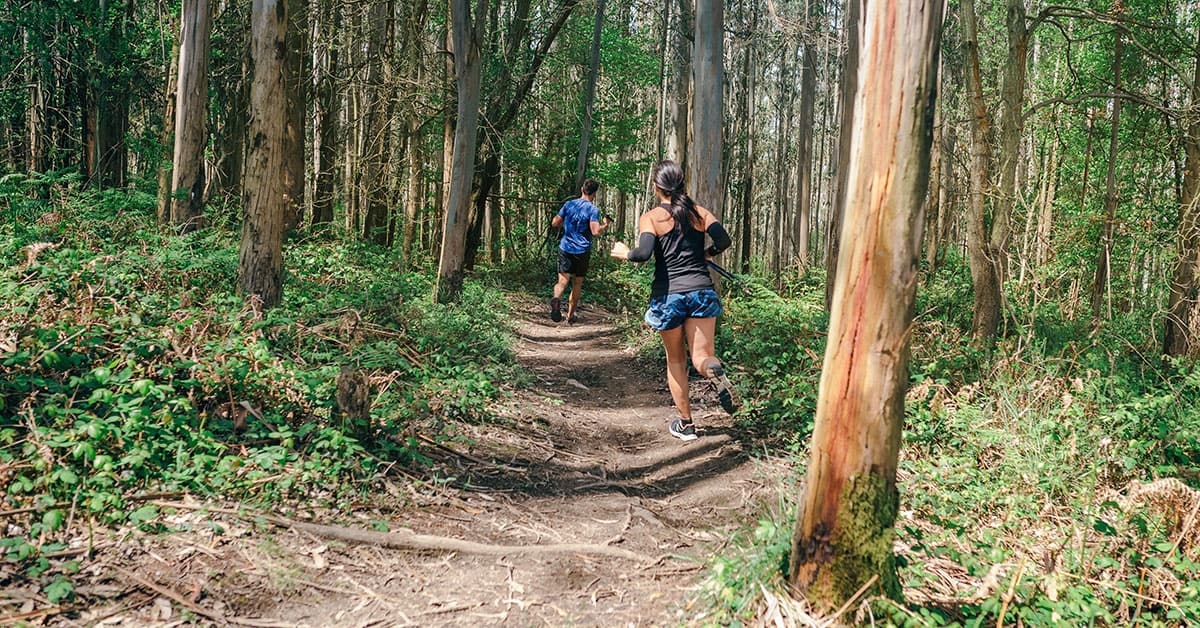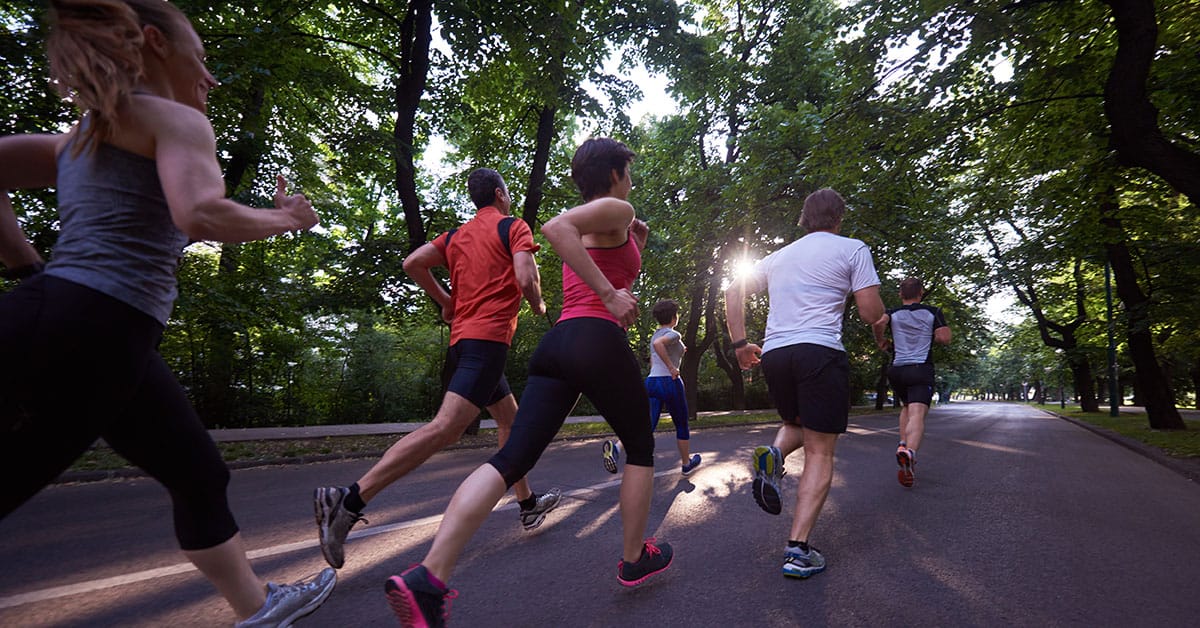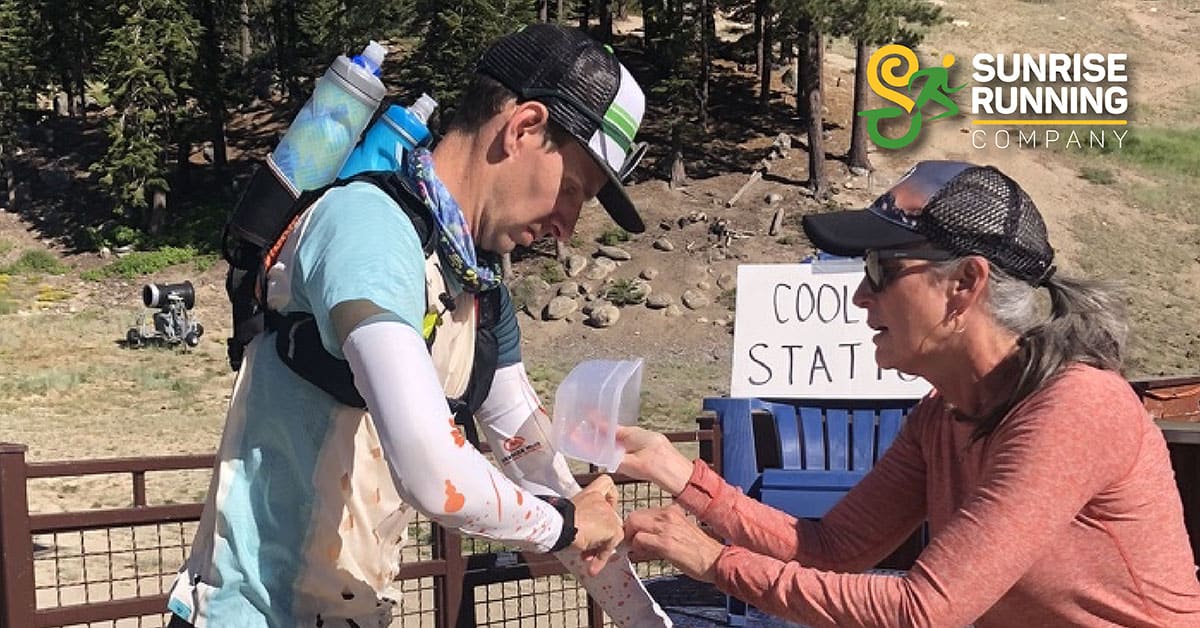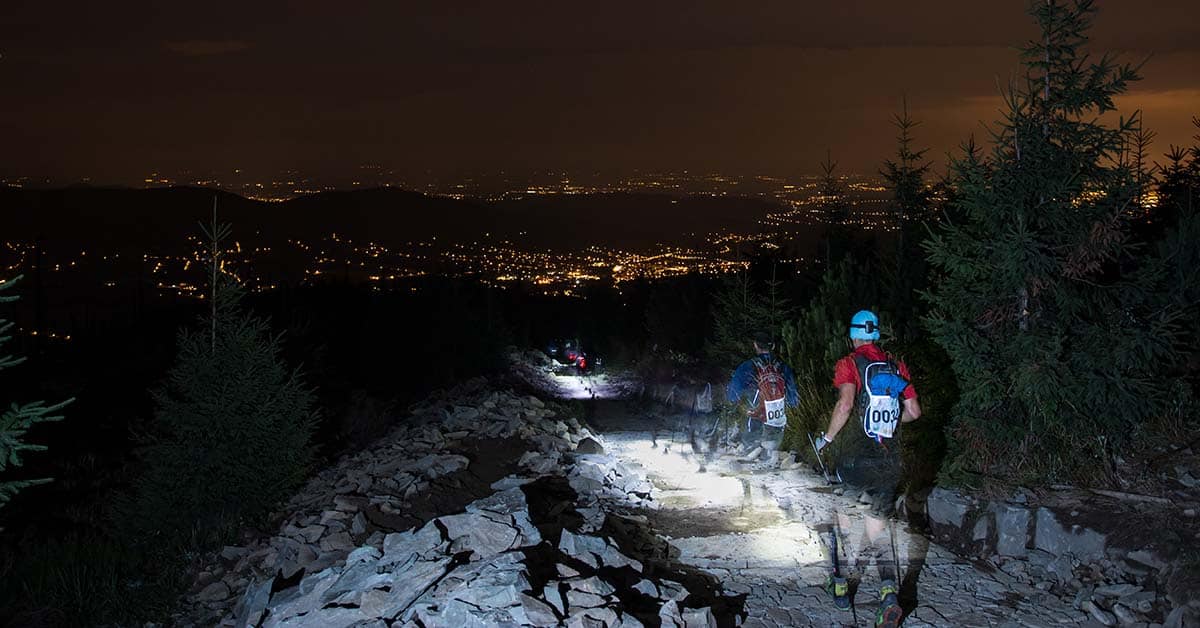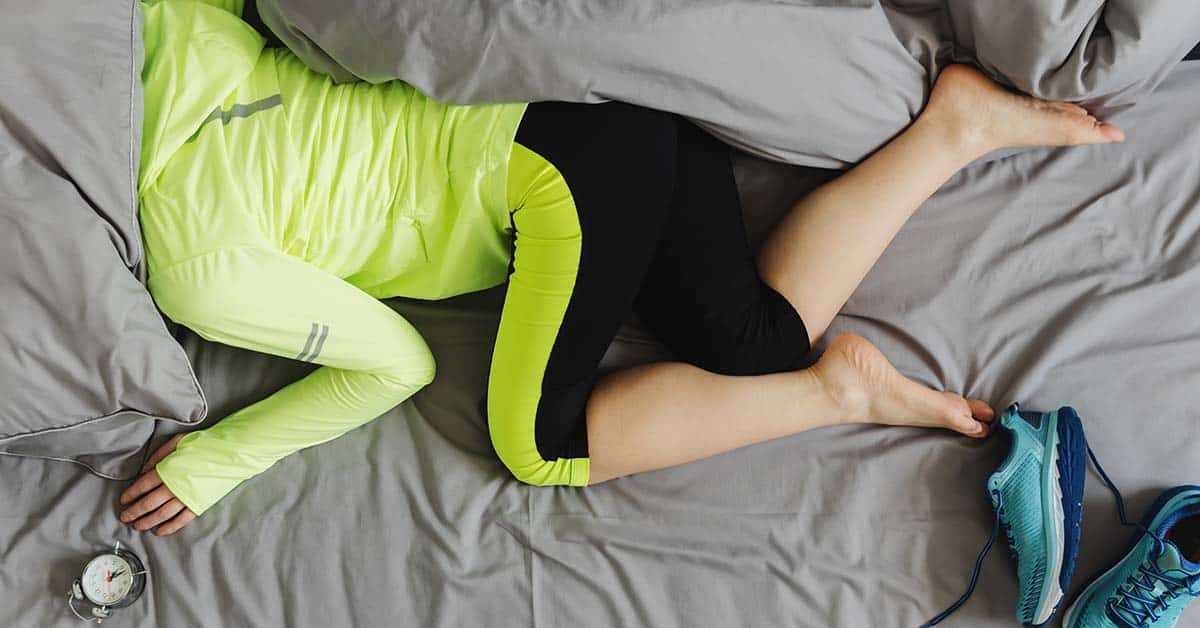Beginner Trail Running Tips
As you transition from road running to trail running, there are a few key differences that you should note. You’ll need to put a little more time and effort into planning the route, buying the right gear, and keeping the proper running form. As a beginner, trail running can be a great experience, and it adds some variety to your run routes.
Here are some of the top trail running tips for beginners:
Planning Your Route
If you’re going off-road running for the first time, go somewhere that’s pretty close to home and that will be pretty easy. Ideally, find a spot that has a few different trail options so you can test out more than one trail style. Start with a low-mileage or relatively flat trail and build up to longer or more technical and hillier trails.
Trail running feels a little different, so you might notice some spots on your feet or ankles where your shoes rub differently than they normally do. Don’t push it too hard at first. Notice what feels different so that you can plan for those things in the future.
Once you start branching out and trying more remote trails, plan your route in advance. Find out if there’s cell service along the route that will allow you to rely on GPS while you’re running. If there’s not, plan your run route much more thoroughly than you normally would so you don’t risk getting lost on the trail.
Choosing Your Gear
If you’re just going for a light trail run on a mulched trail in your neighborhood, you won’t need much special gear. Your typical road running equipment should be fine for easy, well-manicured trails. However, if you’re going to start venturing a little further out into the woods or onto more technical trails that include mud and/or rocks, you’ll need a little more specialized gear. This gear list is designed for off-road running in remote places with hills, rocks, mud, and encroaching plants.
Trail Running Shoes
These are super important! Traditional road running shoes are not designed for off-road running, but trail running shoes are built with trails in mind. Their soles are a little thicker and feature what is called a rock plate so the rocks and tree roots won’t bruise your feet. They have a little more stability so you’re less likely to turn your ankle if you misstep. And they have tread with larger lugs and sticky rubber so you’re less likely to slip on wet rocks and stumps. Trail running shoes are a must if you plan to do much off-road running over technical terrain.
Moisture-Wicking Clothing
If you’re going to be out on the trail for a long time, or if there’s a chance that you might get caught in the rain, it’s important to have moisture-wicking clothes. Many trail runners and adventure seekers have adopted the phrase “cotton kills” because cotton fabric retains water so well. If water stays in your clothing, you can get cold faster and can end up with some chaffing problems. You’ll be much better off wearing moisture-wicking clothing that draws the water away from your skin.
RELATED: How to Prevent Chafing
GPS or Maps
This one is pretty straightforward. If you’re going off on an unmarked trail or a poorly maintained trail, make sure you know how to get back! Many remote spots don’t have great cell service, so you might need a paper map.
Flashlight or Headlamp
If you’ll be running while it’s dark, or if there’s a chance that it might get dark while you’re out, bring a flashlight with you. You don’t want to get stuck running over roots and rocks in the dark. There are lots of options today for headlamps, handheld lights, and even lights you wear around your chest or waist. Do some research on what will work best for you.
As you begin trail running in the dark, you will want to consider brightness, battery life, and how it’s worn or held. Read this guide from Running Warehouse to help make your decision, How to Choose the Best Running Light.
Food
If you’ll be out on the trail for a while, bring a snack with you. Don’t risk losing your energy or dropping your blood sugar level if you’re out in a remote spot by yourself. Plan for roughly 100 to 150 calories per hour in case the planned route takes you longer. Beginner trail runners may want to plan for a little extra nutrition at first until they learn their individual needs.
Water
Stay hydrated. Some trail runners like to wear a hydration pack while they run, and others prefer to carry a water bottle. Try both methods and see what works best for you.
Keeping The Proper Running Form
Trail running is very similar to road running, but you’ve got to pay more attention to tripping hazards. While you run, take smaller steps than you would on paved trails so that you’ll have a quicker reaction time. Similarly, try not to lean forward while you’re running. If you do trip, you don’t want to immediately tumble forward. Keep your posture more upright and use your arms for balance while you run.
When you first begin trail running, focus on your running form more than your speed. Since you have to dodge obstacles while you run, it’s important to train your eyes to scan for tripping hazards and to train your reflexes to respond quickly. If you try to run too quickly, you could misstep and fall.
If you ease into it slowly, you should have no trouble transitioning to trail running. Trail running can be a great pastime, and it’s a fantastic way to mix up your training schedule. Happy trails!
A Training Plan that Works for You.
Our collection of running plans will help you train year-round. From 5k to a 100-mile ultramarathon, we have a training plan built for your experience level and goals. Every plan is delivered via Final Surge, allowing you to sync workouts across devices, receive daily reminders of workouts and activities, and analyze workout and target zone details. Get started today with a training plan built for you, view our running plans here.


